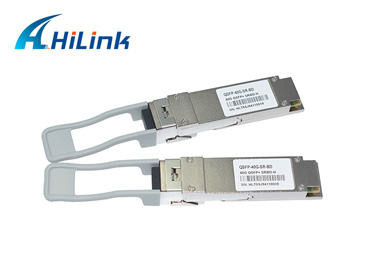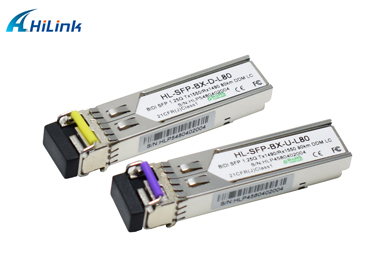40G BiDi vs 40G SWDM4: Which One to Choose?
Nov. 09, 2022
New bandwidth capabilities, high performance, and low-cost requirements are laying the groundwork for network migration. IT leaders are preparing for network upgrades from 10G to 40G/100G Ethernet. Their data center infrastructure has been primarily architected around duplex OM3 and OM4 multimode fiber (MMF). In this article, we will introduce a cost-effective way for 40G/100G network migration: BiDi transceiver solution.
Generally, there are two network upgrade paths for 40G/100G network. One is to use 40GBase-SR4 and 100GBase-SR4 transceivers and replace their original duplex LC patch cables with parallel MTP patch cables, as well as additional trunking/structured cabling. The other is to adopt LC duplex SMF and 40GBase-LR4 and 100GBase-LR4 (or CWDM4) optical transceivers. These two solutions differ in advantages and disadvantages.
40G BiDi & 40G SWDM4 Solution for Network Upgrades
Neither of the above solutions is ideal. So, is there a network upgrade solution that can utilize the existing cabling infrastructure while maintaining original link distances?
Yes, the transceiver with BiDi or SDWM technology might be an ideal choice. 40G/100G BiDi or SWDM4 transceiver is suitable for installing traditional OM3/OM4 fibers, making a simpler and more proficient solution for technicians, and reducing fiber infrastructure expenditures simultaneously.
LC 40G QSFP+ BIDI SR4
What Is 40G BiDi Transceiver?
40G QSFP+ BiDi transceivers are designed with two 20G optical channels which can transmit and receive two wavelengths synchronously over one single MMF(Multi-Mode Fiber) with a transmitted distance of up to 100m by OM3 and 150m by OM4. It can deploy and re-assemble the current 10G cabling structure to adapt to 40G network connectivity. That is to say, you can obtain a 40G speeds of date rate without employing any other devices by making use of a 10G cable plant.
What Is a 40G SWDM4 Transceiver?
The 40G SWDM4 transceiver multiplexes four wavelengths on each simplex fiber, providing a total of 40G bandwidth at 10G per wavelength. And it allows for 40G network connectivity over standard duple MMFs without the need for more fiber or expensive parallel MMF infrastructure. In addition, 40G SWDM transceivers can be manufactured to support up to 300/400/500 meters on OM3/OM4/OM5.
1.25G BIDI SFP 80KM
40G BiDi vs 40G SWDM4: Which One to Choose?
There are a lot of commons between 40G BiDi and 40G SWDM4 transceiver:
1. Both 40G BiDi and 40G SWDM4 transceivers are designed to address the use of 40G Ethernet links over duplex multimode fiber (MMF), allowing upgrades from 10GBASE-SR without changing fiber equipment.
2. Both 40G BiDi and 40G SWDM4 modules support long links over OM3/OM4 fibers.
3. Both the 40G BiDi and the 40G SWDM4 solutions are suitable for small cloud and enterprise data centers.
So in some cases, we can use them as alternatives to each other. But there are still differences between them as well.
1. Transmission Distance - The 40G SWDM module can run up to 300, 400, and 500 meters on OM3, OM4, and OM5 in that order.
2. DDM Function - The 40G SWDM transceiver can support all five digital diagnostic features: temperature, voltage, bias current, Rx power, and Tx power.
Contact us today or visit our website to learn more about optical modules.














